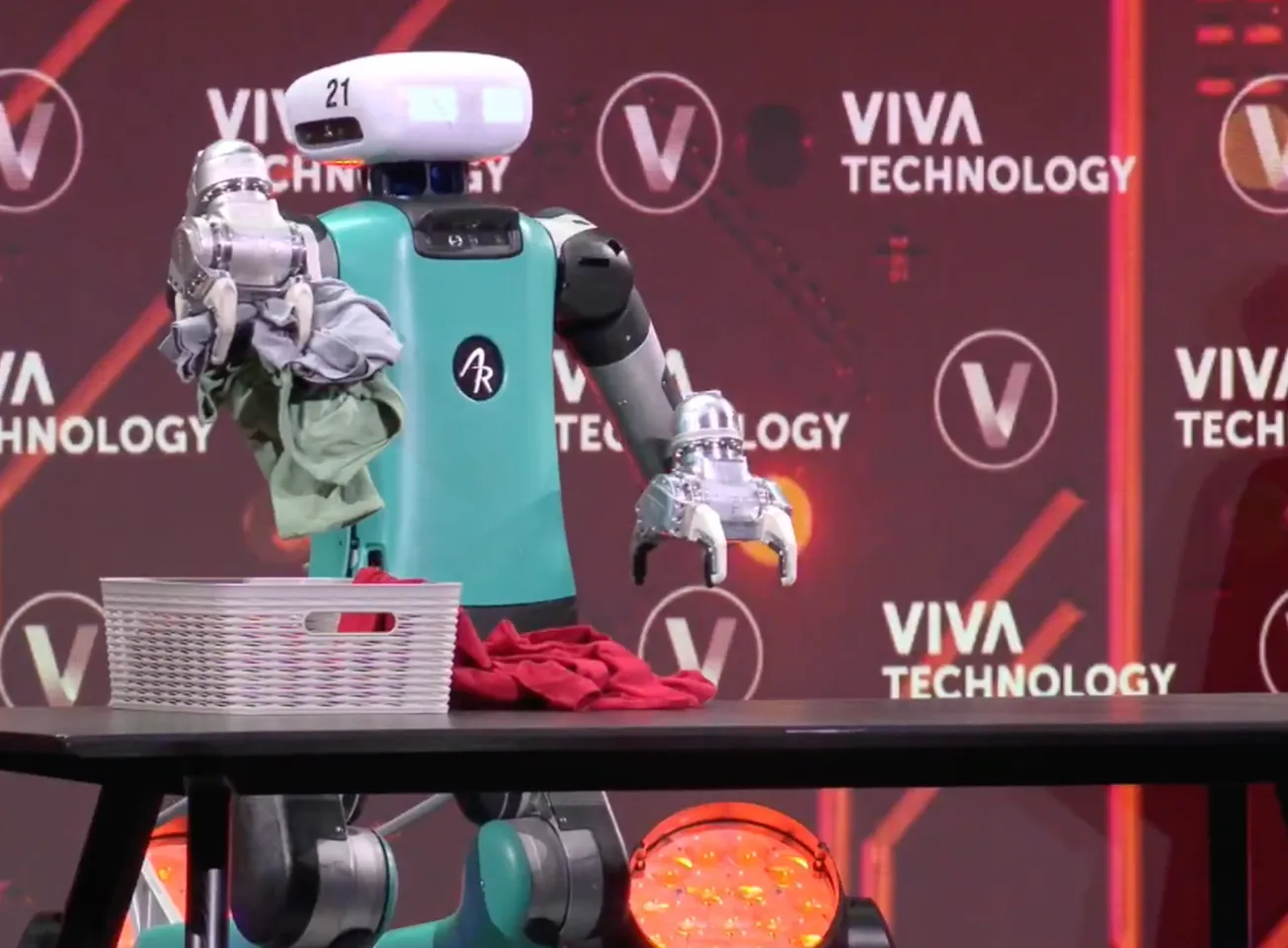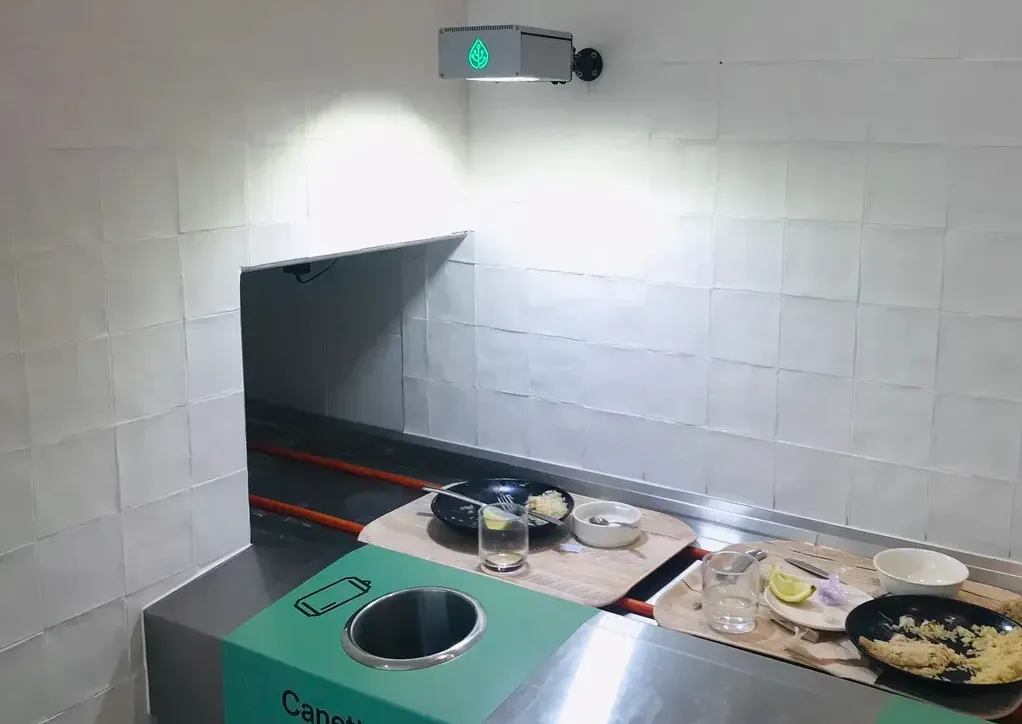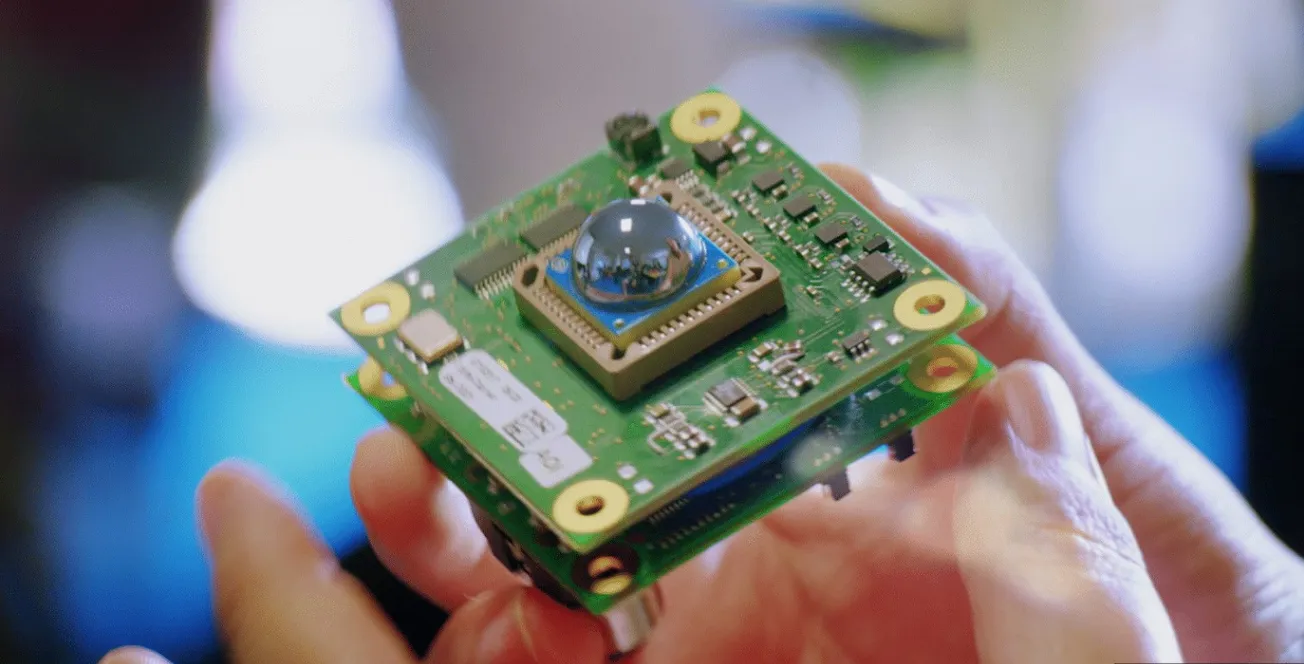At VivaTech 2025, a two-legged robot named Digit quietly sorted colored t-shirts into a basket, responding to voice commands delivered through a large language model. The demonstration might have seemed simple, but according to Daniel Diez, Chief Business Officer for Agility Robotics, it represented something far more significant: the beginning of a transformation.
On Day 2 of VivaTech, I hosted a fireside chat with Diez on the topic of "AI, Robotics, Humans, and the End of Work as We Know It?" Diez demonstrated Agility's Digit on stage as we discussed how AI-driven robots will impact the workforce.
"Is this the end of labor as we know it? Diez told me. "I think we're at the precipice of a fundamental change in the way we think about labor and how people are used or deployed to do work."
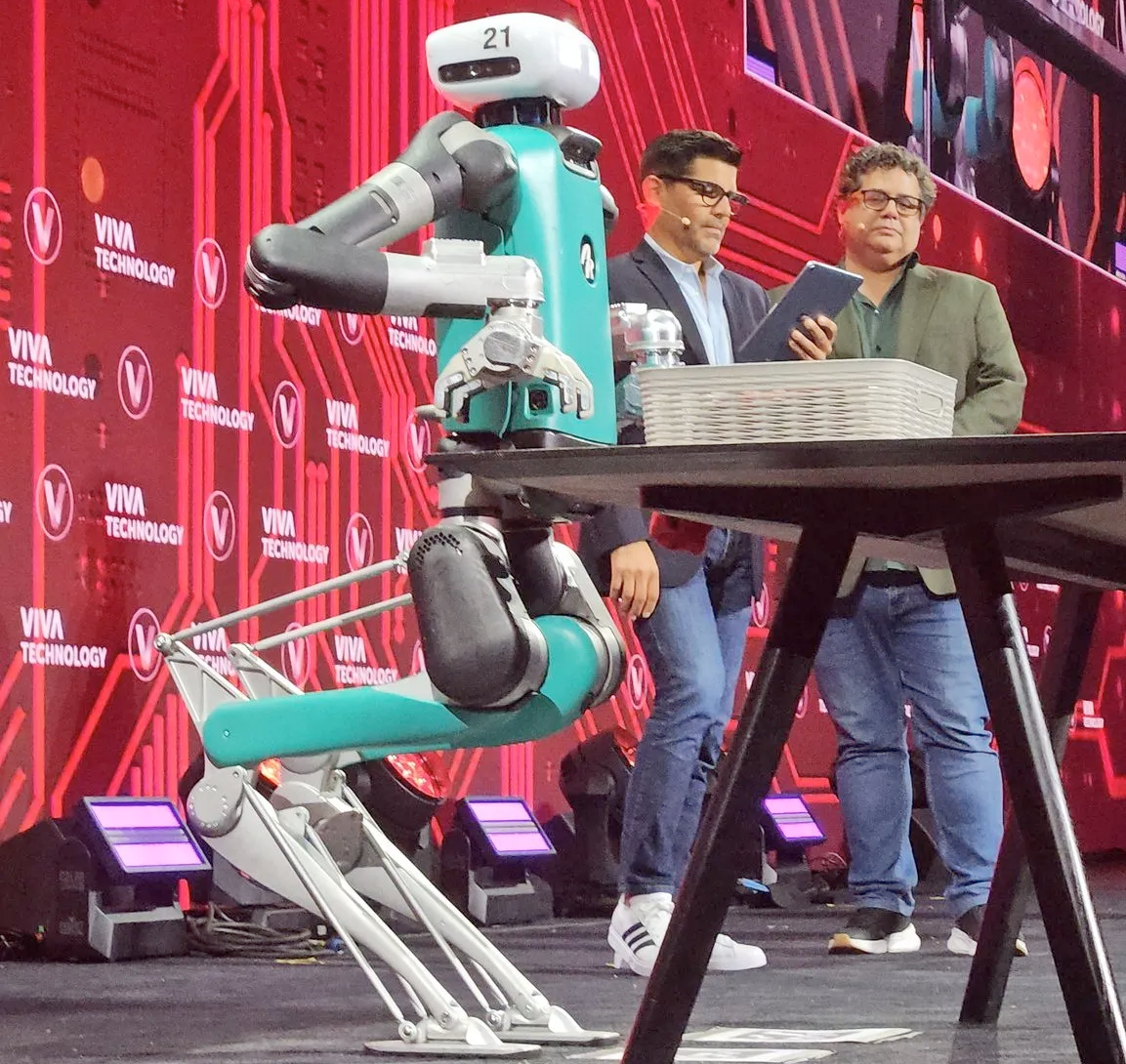
US-based Agility Robotics was founded in 2015 as a spin-off from Oregon State University's Dynamic Robotics Lab, built on decades of groundbreaking research in bipedal locomotion. The company emerged from the work of Jonathan Hurst, who created the robotics lab at Oregon State and helped establish the scientific basis for dynamic stability and locomotion in bipedal robots. Agility's roots stretch back to co-founder Jonathan Hurst's PhD research at Carnegie Mellon University in Pittsburgh in the early 2000s, where he and Damion Shelton, also a co-founder, met.
Over the years, the technology and functionality have continued to evolve rapidly. In 2021, Agility expanded Digit's capabilities to serve the warehouse and logistics industry by focusing on bulk material handling tasks. The company opened a humanoid robotics factory, located in Salem, Oregon, and named RoboFab, to drive commercial-scale manufacturing.
In late 2023, the company announced a partnership with Amazon to bring Digit to their facilities to support distribution and fulfillment tasks. This was followed by a similar partnership with GXO Logistics to work in their Spanx facility outside Atlanta, GA.
Agility Robotics has raised a total funding of $180M over 4 rounds from 15 investors. Key investors include Amazon Industrial Innovation Fund and TDK Ventures.
Filling the Gaps Humans Won't Fill
Rather than painting a dystopian picture of mass unemployment, Diez argued that humanoid robots like Digit are addressing a crisis that's already here: the inability to find humans willing to do certain types of work.
"In the US, it's over a million unfilled positions. They cannot find people to take these jobs, and it's causing a huge issue in productivity," he explained. These aren't just any jobs. They're the physically demanding, repetitive roles in factories and warehouses that form the backbone of modern manufacturing and logistics.
"We have a number of customers who actually overstaff every shift by 20% because they know they're going to have at least 20% absenteeism for these types of roles," Diez said.
The Safety Challenge
Diez was candid about the biggest obstacle preventing widespread robot deployment: safety. Currently, humanoid robots like Digit operate within "safety cages"—physical barriers that separate them from human workers.
"How do you ensure that the robot doesn't fall on a person. How do you ensure that the robot doesn't accidentally move and hit a human being?" Diez asked, describing the technical challenges involved in what's called "cooperative safety."
The company is developing what it claims will be "the world's first cooperatively safe robot" that can work side by side with humans, scheduled for commercial deployment in 2026. This breakthrough could unlock the mass scaling that the industry has been waiting for.
Beyond the Hype
We also addressed the disconnect between viral robot videos on social media and commercial reality. "I think there is a lot of hype in this market," Diez said. "I think there's a lot of implied functionality in a lot of the content that you're seeing online."
While competitors focus on impressive demonstrations, such as robots doing parkour or other physically demanding feats, Diez questioned their practical value: "It's cool that your robot can do parkour, but I don't think anybody's paying for parkour robots in their factories," Diez said. "Agility gets paid for those robots doing this work."
AI and the Future of Robot Intelligence
The demonstration portion of the session showcased how Large Language Models are transforming robot operation. Using Google's Gemini, Diez gave voice commands to Digit, asking it to sort colored t-shirts from a pile of laundry.
"Pick up the red shirts and put them in the basket," he said. The robot processed the request, identified red garments using its array of RGB cameras and LIDAR sensors, and began executing the task.
"It's seeing what's in front of it. It's determining which ones are red, and it knows exactly where they are. It's going to pick them up. And then, it knows that's a basket, and it's going to drop them in there," Diez explained as Digit worked. "This is not a pre-programmed demo."
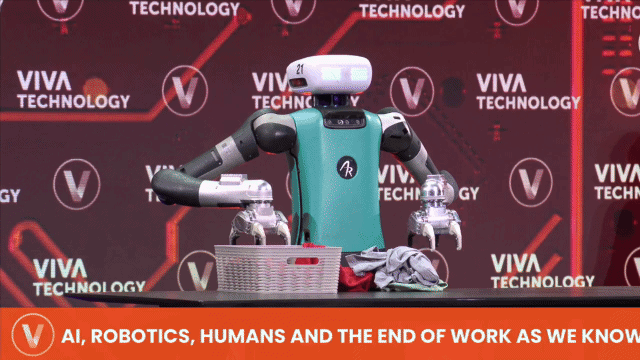
On a screen behind us, the audience could see how Digit processed these multi-step instructions, demonstrating how generative AI integration is moving robots beyond simple programmed routines.
"We are agnostic to which LLM we're using," Diez said. "We're working with all the different players right now in AI because we're going to see which one actually takes the lead in actually creating the foundation models that are best suited for embodied AI."
Global Competition
The economic model for humanoid robots is still evolving. Agility offers two approaches: direct purchase with a 1.9-year return on investment, or a more popular "robot-as-a-service" model where companies pay a discounted rate compared to human labor costs and see immediate ROI.
When the conversation turned to global competition, particularly from China, Diez raised concerns about trust and data security. "Do you want a walking camera in your facility filming everything you do if you don't trust the manufacturer?" he asked, pointing to the cameras and sensors that allow robots to navigate their environment. "If we're worried about TikTok, seriously, like, worried about TikTok, I don't think we're gonna let these robots into our factory."
The Transformation Ahead
Diez believes that this technological shift to humanoid robots won't eliminate jobs but transform them. "This is on the scale of the iPhone. This is on the scale of electricity," he said, comparing the coming change to previous technological revolutions that ultimately created new categories of employment.
The future he envisions includes "digital jobs" managing robot fleets, maintaining facilities, and performing remote operations—roles that don't exist today but will emerge as automation takes hold.
"No one would question a farmer choosing to use a tractor as opposed to hand plowing the field," Diez said. "20 years from now, we're going to look back and we'll say, of course, we're going to deploy these technologies to do this."

